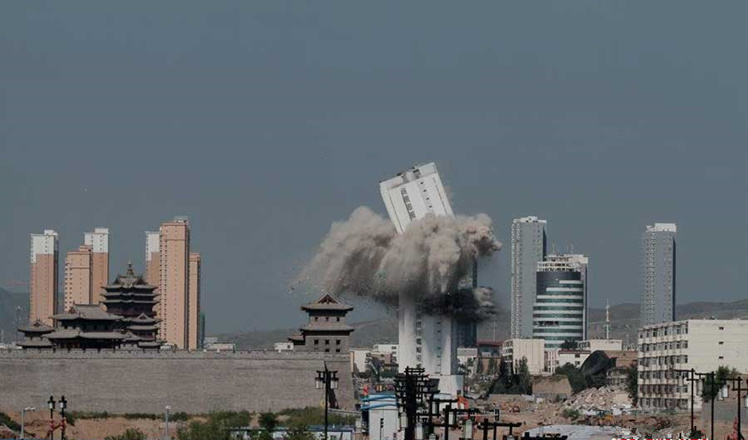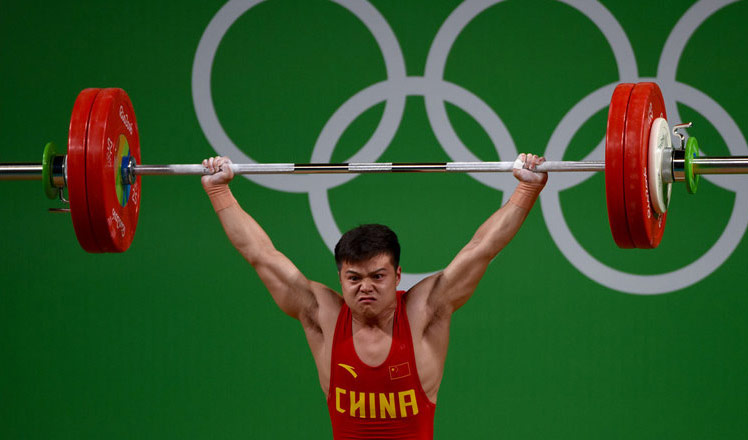Travel in space poised to spread its wings
Updated: 2016-08-08 02:23
By ZHAO LEI(China Daily)
|
||||||||
Chinese space scientists are developing a cutting-edge aerospace vehicle that, if successful, will enable the public to make space journeys.
Researchers at the China Academy of Launch Vehicle Technology are developing a spacecraft that will be propelled by a combination of turbine engine, ramjet and rocket engine, according to the academy, which is part of China Aerospace Science and Technology Corp.
Zhang Yong, deputy chief designer at the academy's research and development center, said the spacecraft will use turbine engines, like those on planes, or rocket-based combined-cycle engines when it takes off from a conventional runway.
After it reaches a certain speed, the ramjet will be activated to thrust the spacecraft into the stratosphere or to the next layer of the Earth's atmosphere, the mesosphere. At this point, rocket engines will be used to put the space vehicle into orbit, Zhang added.
A ramjet is a form of jet engine that uses forward motion to compress incoming air.
With a much lower operational cost and a higher safety guarantee compared with rockets, the space vehicle will be capable of transporting humans hundreds of kilometers above the Earth, Zhang said. It will be used for astronaut missions and for space travel by the public, he added.
It will have a huge potential in space tourism or intercontinental passenger travel, Zhang said.
"Space travelers will have a short period of weightlessness when the vehicle reaches an altitude of about 100 kilometers. If the spacecraft continues to fly up to 400 km above Earth, passengers will experience what it is like to be in a space station," he said.
Yang Yang, a designer at the academy's Institute of Combined-Cycle Aerospace Vehicle Technology, said all the space-exploring nations now use rockets for such activity.
"Rockets have an ultrafast acceleration during flight, resulting in very strict requirements for astronauts' physical condition.
In comparison, the combined-powered spacecraft will gather speed slowly and gently, making the air pressure acceptable to non-astronauts," he said.
The space vehicle can also be used to deploy satellites, he added.
Wang Ya'nan, editor-in-chief of Aerospace Knowledge magazine, said, "Such a vehicle will be able to fly over the Pacific Ocean within an hour, because it will travel in near-space at a speed of 7,000 km/h."
Yang Yuguang, secretary of the International Astronautical Federation's Space Transportation Committee, said the rocket-based combined cycle and turbine-based combined cycle technologies will be the key to the success of the project.
zhaolei@chinadaily.com.cn
- Gemdale to lease SF space to Amazon's Twitch unit
- Chinese researchers plan space travel at lower cost for common people
- New robots to vie for space in the operating room
- Daphne Mallet: More art space can diversify hutong culture
- Heritage sites protected on ground and from space
- High-tech public toilet "Fifth Space" to open in Taiyuan
- SpaceX launches space station docking port, rocket lands on ground
- New lab will explore South China Sea resources
- 40 telecom fraud suspects returned to China from Kenya
- Cheery promotional video introduces G20 city Hangzhou to Europe
- Researchers claim intelligence services targeted Chinese airline
- Tunnel-bus production center faces delays
- Chinese Valentine's Day Special: Love conquers everything
- Nepal's newly elected PM takes oath
- Texas gun law worries incoming students
- China vows to deepen economic, trade cooperation with ASEAN
- Fire guts Emirates jet after hard landing; 1 firefighter dies
- Egypt's Nobel-laureate scientist dies of illness in US
- THAAD muscle flexing unmasks anxiety over declining hegemony

 Top swimmer Sun Yang makes sweet revenge
Top swimmer Sun Yang makes sweet revenge
 Lin Yue and Chen Aisen win Olympic gold medal
Lin Yue and Chen Aisen win Olympic gold medal
 Artist creates mini-mes for loving couples at Qixi festival
Artist creates mini-mes for loving couples at Qixi festival
 Skyscraper demolished outside ancient city
Skyscraper demolished outside ancient city
 Chinese Valentine: Love conquers everything
Chinese Valentine: Love conquers everything
 Ace swimmers make record-breaking splash in Rio
Ace swimmers make record-breaking splash in Rio
 Chinese weightlifter Long smashes world record
Chinese weightlifter Long smashes world record
 China wins first diving gold of Rio Games
China wins first diving gold of Rio Games
Most Viewed
Editor's Picks

|

|

|

|

|

|
Today's Top News
US launches airstrikes against IS targets in Libya's Sirte
Ministry slams US-Korean THAAD deployment
Two police officers shot at protest in Dallas
Abe's blame game reveals his policies failing to get results
Ending wildlife trafficking must be policy priority in Asia
Effects of supply-side reform take time to be seen
Chinese State Councilor Yang Jiechi to meet Kerry
Chinese stocks surge on back of MSCI rumors
US Weekly

|

|








